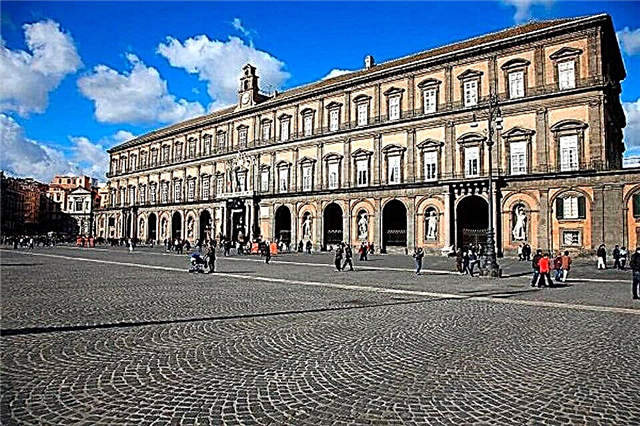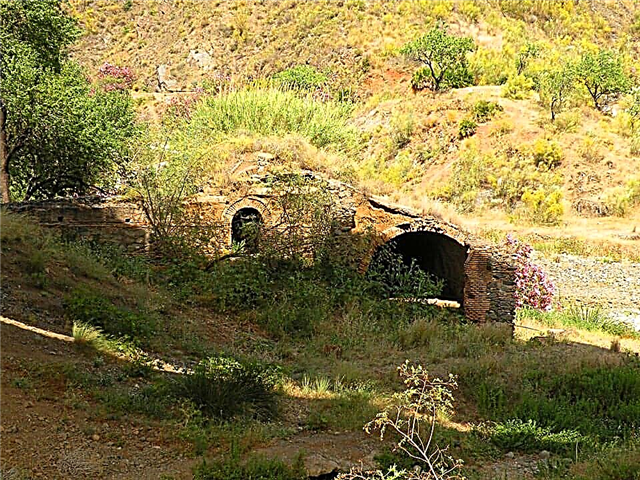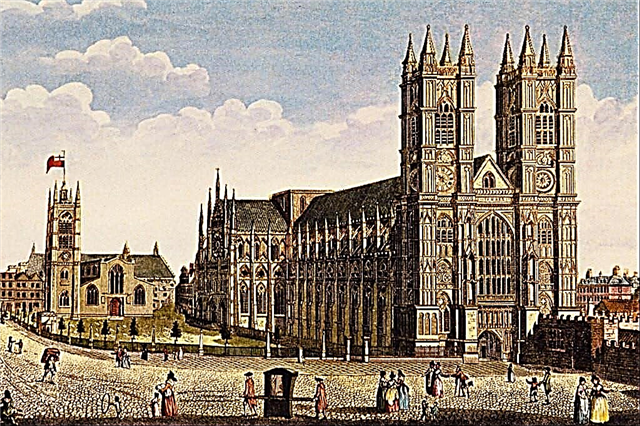One of the most fashionable and aristocratic capitals in the world has a huge number of ancient cathedrals and churches with interesting stories of their origin. They can be used to judge the process of development of the capital city and the whole great power state as a whole. Each cathedral is a kind of monument to a particular historical era, great personalities or large-scale events that radically affected the process of the formation of royal and state power, in the change of the social system. The galaxy of cathedrals in London can be called a kind of milestones in the history of not only the capital, but also England itself.
Westminster Abbey

Initially, it was a whole complex of monastic buildings and churches, where from the 11th century the coronation of monarchs took place and their burial was carried out. For a long time, the abbey was not only a cult place throughout Great Britain, but also a hotbed of culture and enlightenment, where the Bible was translated into English, from where the most educated preachers and specialists of different directions came out. The importance of this place is evidenced by the fact of the recent wedding of Prince William and Kate Middleton here: the British still honor Westminster, although now only St. Peter's Church has survived from the entire abbey.
The history of the abbey

The creation of the first church is based on the legend of a fisherman who caught fish in the Thames and saw the image of a saint in the sky above it. This message spread throughout the entire neighborhood, so it was decided as a sign of vision to build the Church of Peter near the symbolic place. There is also a more prosaic explanation: all fishermen paid a tax to the abbey with valuable fish, so such a romantic legend played into the hands of religious rulers.
Based on the chronicle of the 7th century, it was concluded that the founders of the abbey were the first king of Essex and the Bishop of London Mellit in the 600s. According to later sources, extensive construction around the church dates back to the 900s.
Westminster today

Now the two-headed church is a UNESCO World Heritage Site, where thousands of tourists strive to visit, who consider it great happiness to see a unique structure, which houses more than 3000 tombstones of great people, including famous English poets and writers. Here are organized magnificent concerts of sacred music, mass prayers, gathering tens of thousands of people.
The church is interesting both as a monument of architecture of the early Gothic style with its grace and beauty of lines, and as a rich treasury of paintings, weaving and other types of applied art from different centuries.
St Paul's Cathedral

According to numerous reviews of tourists, it is the most beautiful among its brothers in its architecture, which delights everyone who sees it.
Brief chronology of the monument
Until now, the cathedral has undergone changes 5 times since 604, when a wooden church was first erected, which served until 675 and was destroyed by fire.
In order not to endanger the destruction by fire, the building was again made of stone in 685, however, it was brutally destroyed in 961 by the Vikings during their next barbarian raid.
For the third time, the stone church, which stood before the grandiose London fire of 1087, was also built of stone.

The most monumental building in Europe at the beginning of the 11th century was the cathedral, built for the fourth time and consecrated in 1240. It delighted parishioners until 1666, when the next Great Fire broke out in London, during which the massive building was badly damaged.
They did not begin to restore it, but decided to lay a stone church, the fifth in a row, erected by the famous architect Ren. The first services began here in 1697, but the grand opening took place on the day of the birth of the talented architect - on October 20, 1708, when he turned 76 years old.
The magnificent architectural structure cannot but admire with its monumentality, the unique beauty of domes and spiers, the extraordinary grace of columns and lattices. The richness and luxury of the interiors and the contents of the numerous halls amaze the imagination. The burial list of legendary personalities of the world buried under its vaults is impressive: Admiral Nelson, Duke of Wellington, President Churchill, Prime Minister Margaret Thatcher ... It hosts high society and church celebrations and ceremonies of no less important persons of modern England. St. Paul's Cathedral is a world monument and a current religious site that attracts people from all over the planet.
Church of St. Margaret

Saint Margaret went down in the history of Orthodoxy as a true Christian who faithfully followed the commandments of Christ and was subjected to cruel torture by pagans. Christians celebrate the day of the holy great martyr on July 30 and worship her as a deliverer from many misfortunes and hardships. In honor of her on the territory of Westminster in the 12th century, Benedictine monks built the first church for ordinary parishioners, which was rebuilt in the early years of the Tudor dynasty. In the 17th century it was made a parish for members of the British Parliament.
It hosted weddings of noble aristocrats and historical figures. The central facade of the church overlooks Parliament Square, creating a uniquely beautiful view with its vertical Gothic tower, directed upwards with four spiers. The building has an original sundial, showing the time before noon on the eastern facade, and after - on the western one.

A true piece of stained glass art is the East Window, made by Flemish craftsmen as a sign of Henry VIII's engagement to Catherine of Aragon. A unique organ is installed in the church, the sound of which is recognized as the best among other famous instruments in the world. Hundreds of tourists come here to admire the architectural monument, bow to Saint Margaret and listen to the divinely unique sound of the church organ.
London's cathedrals are a symbol not only of the great past, but of the present and future of the Orthodox faith and the greatness of the state.











